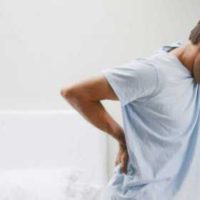Author Interviews, CT Scanning, Pain Research / 28.11.2018
Pulsed Radiofrequency For Acute Back Pain and Sciatica
MedicalResearch.com Interview with:
Alessandro Napoli MD PhD
Department of Radiological, Oncological and Pathological Sciences
Sapienza University of Rome
MedicalResearch.com: What is the background for this study? What are the main findings?
Response: Disc Herniation in the lumbar region can create intense pain in the lower back and along the leg as a result of nerve compression. People suffering disc herniation may either experience a spontaneous relief from the pain or requiring further medical actions in order to improve quality of life and going back to work and daily activities. When the pain is not responding to usual conservative care (both physical and pharmacological therapy) surgery is often considered a valid option.However, most of the people (despite the intense pain) would possibly avoid surgery. For this reason, Interventional percutaneous therapies such as intraforaminal injection of steroid have become more popular. Pulsed radiofrequency is a percutaneous therapy that may have the potential to rapidly relief the pain in a long lasting way by means of single 10 minutes procedure. We decided to undertook a randomized clinical trial to test the clinical benefit of pulsed radiofrequency therapy using intraforaminal injection as a control group. in both groups percutaneous approach was guided under precise guidance of CT images.
Pulsed radiofrequency group patients experience a faster and more durable pain control during the 1 year period follow up. Incidence of retreatment or cross-over was significantly higher in the injection only group.
(more…)



 MedicalResearch.com Interview with:
Daniel Steffens, Ph.D.
The George Institute for Global Health
The University of Sydney
Medical Research: What is the background for this study?
Dr. Steffens: Back pain is a leading cause of disease burden globally. At present, a variety of interventions, such as getting a
MedicalResearch.com Interview with:
Daniel Steffens, Ph.D.
The George Institute for Global Health
The University of Sydney
Medical Research: What is the background for this study?
Dr. Steffens: Back pain is a leading cause of disease burden globally. At present, a variety of interventions, such as getting a 
